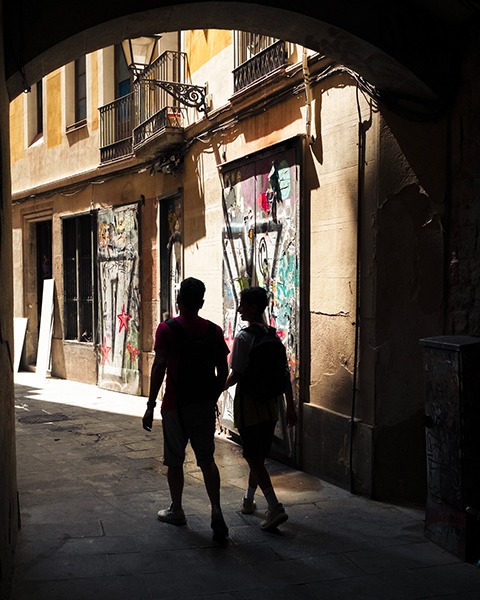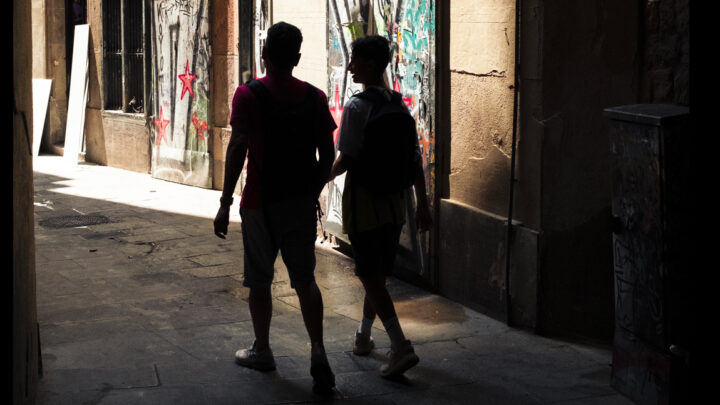Be sophisticated
Don’t compare your photographs to those of other random photographers on Instagram, Flickr, and Facebook. Instead, take inspiration from history’s most significant street photographers: Henry Cartier-Bresson, Garry Winogrand, Robert Frank, Vivian Meyer, Bruce Gilden, Saul Leiter, Josef Koudelka, Alex Webb, William Klein, David Halan Harvey, Joel Meyerowitz, Matt Stuart. Nowadays, we have all the opportunities, and photography is everywhere: on social media, in museums, and in galleries, you can find all sorts of books by famous street photographers.
Be inspired by the best street photographers of history, consume the work of the greats, and try to build a body of work that stands on its own, a series of sophisticated street photographs. It is not a competition against those famous photographers. Instead, it is about filling your mind with a “library” of outstanding images to help you grow your potential in street photography. Of course, it would help if you try to get sophisticated through inspiration.
We are like dwarves sitting on the shoulders of giants. We see more, and things that are more distant, than they did, not because our sight is superior or because we are taller than they, but because they raise us up, and by their great stature add to ours.
Bernard de Chartres
Be inspired by arts (not only by photography)
You can also find inspiration from painting, music, and literature. In making street photography, you don’t need beautiful models, golden hour, outstanding location, or a lot of gear. Like a painter that creates something from nothing, the street photographer needs just the street. So get inspired by art, go out in the street and take photographs of what interests you and catches your attention. Photography is just another form of art, a way of communication about the human predicament. Through photography, you want to say something, be an author, give your vision of the world, express an idea or a concept, or transmit emotions and feelings.
Less is more. Limitations are freedom
Choosing just one camera and one lens seems to limit your expressive freedom. But, of course, it is precisely the opposite way. For example, analysis paralysis is that feeling of anxiety when you have so much information that any action feels like the wrong one, so you don’t do anything at all. There is a psychological principle behind this feeling called the Choice Overload Effect. So the best way to be a creative photographer is to limit your choice: one lens, one camera.
Limit the area in which you go to take street photos
Limiting the location you shoot will give benefits. You will know the area much better and get more exciting opportunities to make good images, allowing you to work with more consistency.
Keep pushing your limit
Don’t be easily satisfied. Even the most experienced street photographers kept working on the scene and took many pictures of the same subject to have one perfect photograph. Also, “the decisive moment” was often made by a series of photos captured in the timeline to have the perfect one. Continue also to reinvent yourself and change every day something in your approach. Keeping pushing your limits will keep you creative.
Find something to say
While taking a street photo, try to express your voice and vision of the world around you. As an author, you want to have something to say. You don’t wish to capture everything you see in the street as weird or funny. You want something more profound. Your street photographs are your unique vision and perspective of the world. You decide how to frame the scene, the moment to capture, the depth of field, and the exposure.
You can’t be an author unless you have something to say.
David Alan Harvey
Capture emotions
You can take fantastic street photographs using composition, many layers, light, deep shadow, and colors. But a street photograph becomes meaningful and memorable when you try to express how it feels to be human. The emotional photos are also the ones that have a soul.
Don’t shoot what it looks like. Shoot what it feels like.
David Alan Harvey

Make it simple
Don’t make a complex concept for your projects. If you make it simple, this will give you a better approach and focus. You can use a system based on typology (for example, “Gypsies” by Josef Koudelka), or a location-based approach (a model can be the fantastic work of Joel Meyerowitz).
The gear doesn’t matter
When it comes to street photography, the only thing that matter is the photograph. So use whatever camera you have, even a mobile phone, and don’t miss the moment. Usually, photographers think that the equipment is an essential aspect of street photography. On the contrary, I think the gear is, in many ways, the less important aspect of street photography. Street photography is about your vision, the potential you can see in what is happening in front of your camera while walking on the street, and how you position yourself to record the scene on the frame to make a street photograph.
The camera is just a space-time editing tool. With the frame, you edit the space you want to capture in your photograph and the time (the moment) through the shutter button. The camera is just an unintelligent box with a hole on one side and a sensitive-recoding material on the opposite side.
On its own, the camera has no vision.
A portrait is not made in the camera but on the other side of it.
Edward Steichen
We can say the same about street photography: street photographs are not made by the camera but by the photographer. So, naturally, the camera needs a smart human behind it to make compelling photographs.
The single most important component of a camera is the twelve inches behind it!
Ansel Adams
The camera freezes a moment of reality. In street photography, the camera is a fundamental tool to record how we, human beings, live in a vast modern city. Street photography is candid photography in the public realm. It is observational photography where the photographer matter more than the camera. As a camera, you can use whatever you have. It can be your mobile phone, a DSLR, a mirrorless, or a film camera. Whatever has a hole on one side and a sensitive-recording material on the opposite will work perfectly.
To start with your mobile phone can be a good idea
For this reason, you can use whatever tool is okay for you in street photography. Many excellent street photographers out there do street photography with their iPhones. And those street photographers get good quickly because they make it simple to take pictures with just one lens and one camera (no overthinking) and always have the camera ready to go in their pocket.
